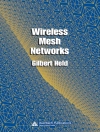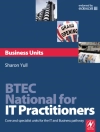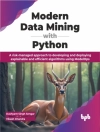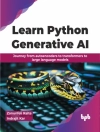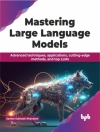Resource optimization has always been a thrust area of research, and as the Internet of Things (Io T) is the most talked about topic of the current era of technology, it has become the need of the hour. Therefore, the idea behind this book was to simplify the journey of those who aspire to understand resource optimization in the Io T. To this end, included in this book are various real-time/offline applications and algorithms/case studies in the fields of engineering, computer science, information security, and cloud computing, along with the modern tools and various technologies used in systems, leaving the reader with a high level of understanding of various techniques and algorithms used in resource optimization.
สารบัญ
Preface xv
1 A Fundamental Overview of Different Algorithms and Performance Optimization for Swarm Intelligence 1
Manju Payal, Abhishek Kumar and Vicente García Díaz
1.1 Introduction 1
1.2 Methodology of SI Framework 3
1.3 Composing With SI 7
1.4 Algorithms of the SI 7
1.5 Conclusion 18
References 18
2 Introduction to Io T With Swarm Intelligence 21
Anant Mishra and Jafar Tahir
2.1 Introduction 21
2.1.1 Literature Overview 22
2.2 Programming 22
2.2.1 Basic Programming 22
2.2.2 Prototyping 22
2.3 Data Generation 23
2.3.1 From Where the Data Comes? 23
2.3.2 Challenges of Excess Data 24
2.3.3 Where We Store Generated Data? 24
2.3.4 Cloud Computing and Fog Computing 25
2.4 Automation 26
2.4.1 What is Automation? 26
2.4.2 How Automation is Being Used? 26
2.5 Security of the Generated Data 30
2.5.1 Why We Need Security in Our Data? 30
2.5.2 What Types of Data is Being Generated? 31
2.5.3 Protecting Different Sector Working on the Principle of Io T 32
2.6 Swarm Intelligence 33
2.6.1 What is Swarm Intelligence? 33
2.6.2 Classification of Swarm Intelligence 33
2.6.3 Properties of a Swarm Intelligence System 34
2.7 Scope in Educational and Professional Sector 36
2.8 Conclusion 37
References 38
3 Perspectives and Foundations of Swarm Intelligence and its Application 41
Rashmi Agrawal
3.1 Introduction 41
3.2 Behavioral Phenomena of Living Beings and Inspired Algorithms 42
3.2.1 Bee Foraging 42
3.2.2 ABC Algorithm 43
3.2.3 Mating and Marriage 43
3.2.4 MBO Algorithm 44
3.2.5 Coakroach Behavior 44
3.3 Roach Infestation Optimization 45
3.3.1 Lampyridae Bioluminescence 45
3.3.2 GSO Algorithm 46
3.4 Conclusion 46
References 47
4 Implication of Io T Components and Energy Management Monitoring 49
Shweta Sharma, Praveen Kumar Kotturu and Prafful Chandra Narooka
4.1 Introduction 49
4.2 Io T Components 53
4.3 Io T Energy Management 56
4.4 Implication of Energy Measurement for Monitoring 57
4.5 Execution of Industrial Energy Monitoring 58
4.6 Information Collection 59
4.7 Vitality Profiles Analysis 59
4.8 Io T-Based Smart Energy Management System 61
4.9 Smart Energy Management System 61
4.10 Io T-Based System for Intelligent Energy Management in Buildings 62
4.11 Smart Home for Energy Management Using Io T 62
References 64
5 Distinct Algorithms for Swarm Intelligence in Io T 67
Trapty Agarwal, Gurjot Singh, Subham Pradhan and Vikash Verma
5.1 Introduction 67
5.2 Swarm Bird–Based Algorithms for Io T 68
5.2.1 Particle Swarm Optimization (PSO) 68
5.2.1.1 Statistical Analysis 68
5.2.1.2 Algorithm 68
5.2.1.3 Applications 69
5.2.2 Cuckoo Search Algorithm 69
5.2.2.1 Statistical Analysis 69
5.2.2.2 Algorithm 70
5.2.2.3 Applications 70
5.2.3 Bat Algorithm 71
5.2.3.1 Statistical Analysis 71
5.2.3.2 Algorithm 71
5.2.3.3 Applications 72
5.3 Swarm Insect–Based Algorithm for Io T 72
5.3.1 Ant Colony Optimization 72
5.3.1.1 Flowchart 73
5.3.1.2 Applications 73
5.3.2 Artificial Bee Colony 74
5.3.2.1 Flowchart 75
5.3.2.2 Applications 75
5.3.3 Honey-Bee Mating Optimization 75
5.3.3.1 Flowchart 76
5.3.3.2 Application 77
5.3.4 Firefly Algorithm 77
5.3.4.1 Flowchart 78
5.3.4.2 Application 78
5.3.5 Glowworm Swarm Optimization 78
5.3.5.1 Statistical Analysis 79
5.3.5.2 Flowchart 79
5.3.5.3 Application 80
References 80
6 Swarm Intelligence for Data Management and Mining Technologies to Manage and Analyze Data in Io T 83
Kashinath Chandelkar
6.1 Introduction 83
6.2 Content Management System 84
6.3 Data Management and Mining 85
6.3.1 Data Life Cycle 86
6.3.2 Knowledge Discovery in Database 87
6.3.3 Data Mining vs. Data Warehousing 88
6.3.4 Data Mining Techniques 88
6.3.5 Data Mining Technologies 92
6.3.6 Issues in Data Mining 93
6.4 Introduction to Internet of Things 94
6.5 Swarm Intelligence Techniques 94
6.5.1 Ant Colony Optimization 95
6.5.2 Particle Swarm Optimization 95
6.5.3 Differential Evolution 96
6.5.4 Standard Firefly Algorithm 96
6.5.5 Artificial Bee Colony 97
6.6 Chapter Summary 98
References 98
7 Healthcare Data Analytics Using Swarm Intelligence 101
Palvadi Srinivas Kumar, Pooja Dixit and N. Gayathri
7.1 Introduction 101
7.1.1 Definition 103
7.2 Intelligent Agent 103
7.3 Background and Usage of AI Over Healthcare Domain 104
7.4 Application of AI Techniques in Healthcare 105
7.5 Benefits of Artificial Intelligence 106
7.6 Swarm Intelligence Model 107
7.7 Swarm Intelligence Capabilities 108
7.8 How the Swarm AI Technology Works 109
7.9 Swarm Algorithm 110
7.10 Ant Colony Optimization Algorithm 110
7.11 Particle Swarm Optimization 112
7.12 Concepts for Swarm Intelligence Algorithms 113
7.13 How Swarm AI is Useful in Healthcare 114
7.14 Benefits of Swarm AI 115
7.15 Impact of Swarm-Based Medicine 116
7.16 SI Limitations 117
7.17 Future of Swarm AI 118
7.18 Issues and Challenges 119
7.19 Conclusion 120
References 120
8 Swarm Intelligence for Group Objects in Wireless Sensor Networks 123
Kapil Chauhan and Pramod Singh Rathore
8.1 Introduction 123
8.2 Algorithm 127
8.3 Mechanism and Rationale of the Work 130
8.3.1 Related Work 131
8.4 Network Energy Model 132
8.4.1 Network Model 132
8.5 PSO Grouping Issue 132
8.6 Proposed Method 133
8.6.1 Grouping Phase 133
8.6.2 Proposed Validation Record 133
8.6.3 Data Transmission Stage 133
8.7 Bunch Hub Refreshing Calculation Dependent on an Improved PSO 133
8.8 Other SI Models 134
8.9 An Automatic Clustering Algorithm Based on PSO 135
8.10 Steering Rule Based on Informed Algorithm 136
8.11 Routing Protocols Based on Meta-Heuristic Algorithm 137
8.12 Routing Protocols for Avoiding Energy Holes 138
8.13 System Model 138
8.13.1 Network Model 138
8.13.2 Power Model 139
References 139
9 Swam Intelligence–Based Resources Optimization and Analyses and Managing Data in Io T With Data Mining Technologies 143
Pooja Dixit, Palvadi Srinivas Kumar and N. Gayathri
9.1 Introduction 143
9.1.1 Swarm Intelligence 143
9.1.1.1 Swarm Biological Collective Behavior 145
9.1.1.2 Swarm With Artificial Intelligence Model 147
9.1.1.3 Birds in Nature 150
9.1.1.4 Swarm with Io T 153
9.2 Io T With Data Mining 153
9.2.1 Data from Io T 154
9.2.1.1 Data Mining for Io T 154
9.2.2 Data Mining With KDD 157
9.2.3 PSO With Data Mining 159
9.3 ACO and Data Mining 161
9.4 Challenges for ACO-Based Data Mining 162
References 162
10 Data Management and Mining Technologies to Manage and Analyze Data in Io T 165
Shweta Sharma, Satya Murthy Sasubilli and Kunal Bhargava
10.1 Introduction 165
10.2 Data Management 166
10.3 Data Lifecycle of Io T 167
10.4 Procedures to Implement Io T Data Management 171
10.5 Industrial Data Lifecycle 173
10.6 Industrial Data Management Framework of Io T 174
10.6.1 Physical Layer 174
10.6.2 Correspondence Layer 175
10.6.3 Middleware Layer 175
10.7 Data Mining 175
10.7.1 Functionalities of Data Mining 179
10.7.2 Classification 180
10.8 Clustering 182
10.9 Affiliation Analysis 182
10.10 Time Series Analysis 183
References 185
11 Swarm Intelligence for Data Management and Mining Technologies to Manage and Analyze Data in Io T 189
Kapil Chauhan and Vishal Dutt
11.1 Introduction 190
11.2 Information Mining Functionalities 192
11.2.1 Classification 192
11.2.2 Clustering 192
11.3 Data Mining Using Ant Colony Optimization 193
11.3.1 Enormous Information Investigation 194
11.3.2 Data Grouping 195
11.4 Computing With Ant-Based 196
11.4.1 Biological Background 196
11.5 Related Work 197
11.6 Contributions 198
11.7 SI in Enormous Information Examination 198
11.7.1 Handling Enormous Measure of Information 199
11.7.2 Handling Multidimensional Information 199
11.8 Requirements and Characteristics of Io T Data 200
11.8.1 Io T Quick and Gushing Information 200
11.8.2 Io T Big Information 200
11.9 Conclusion 201
References 202
12 Swarm Intelligence–Based Energy-Efficient Clustering Algorithms for WSN: Overview of Algorithms, Analysis, and Applications 207
Devika G., Ramesh D. and Asha Gowda Karegowda
12.1 Introduction 208
12.1.1 Scope of Work 209
12.1.2 Related Works 209
12.1.3 Challenges in WSNs 210
12.1.4 Major Highlights of the Chapter 213
12.2 SI-Based Clustering Techniques 213
12.2.1 Growth of SI Algorithms and Characteristics 214
12.2.2 Typical SI-Based Clustering Algorithms 219
12.2.3 Comparison of SI Algorithms and Applications 219
12.3 WSN SI Clustering Applications 219
12.3.1 WSN Services 233
12.3.2 Clustering Objectives for WSN Applications 233
12.3.3 SI Algorithms for WSN: Overview 234
12.3.4 The Commonly Applied SI-Based WSN Clusterings 235
12.3.4.1 ACO-Based WSN Clustering 235
12.3.4.2 PSO-Based WSN Clustering 237
12.3.4.3 ABC-Based WSN Clustering 240
12.3.4.4 CS Cuckoo–Based WSN Clustering 241
12.3.4.5 Other SI Technique-Based WSN Clustering 242
12.4 Challenges and Future Direction 246
12.5 Conclusions 247
References 253
13 Swarm Intelligence for Clustering in Wireless Sensor Networks 263
Preeti Sethi
13.1 Introduction 263
13.2 Clustering in Wireless Sensor Networks 264
13.3 Use of Swarm Intelligence for Clustering in WSN 266
13.3.1 Mobile Agents: Properties and Behavior 266
13.3.2 Benefits of Using Mobile Agents 267
13.3.3 Swarm Intelligence–Based Clustering Approach 268
13.4 Conclusion 272
References 272
14 Swarm Intelligence for Clustering in Wi-Fi Networks 275
Astha Parihar and Ramkishore Kuchana
14.1 Introduction 275
14.1.1 Wi-Fi Networks 275
14.1.2 Wi-Fi Networks Clustering 277
14.2 Power Conscious Fuzzy Clustering Algorithm (PCFCA) 278
14.2.1 Adequate Cluster Head Selection in PCFCA 278
14.2.2 Creation of Clusters 279
14.2.3 Execution Assessment of PCFCA 282
14.3 Vitality Collecting in Remote Sensor Systems 282
14.3.1 Power Utilization 283
14.3.2 Production of Energy 283
14.3.3 Power Cost 284
14.3.4 Performance Representation of EEHC 284
14.4 Adequate Power Circular Clustering Algorithm (APRC) 284
14.4.1 Case-Based Clustering in Wi-Fi Networks 284
14.4.2 Circular Clustering Outlook 284
14.4.3 Performance Representation of APRC 285
14.5 Modifying Scattered Clustering Algorithm (MSCA) 286
14.5.1 Equivalence Estimation in Data Sensing 286
14.5.2 Steps in Modifying Scattered Clustering Algorithm (MSCA) 286
14.5.3 Performance Evaluation of MSCA 287
14.6 Conclusion 288
References 288
15 Support Vector in Healthcare Using SVM/PSO in Various Domains: A Review 291
Vishal Dutt, Pramod Singh Rathore and Kapil Chauhan
15.1 Introduction 291
15.2 The Fundamental PSO 292
15.2.1 Algorithm for PSO 293
15.3 The Support Vector 293
15.3.1 SVM in Regression 299
15.3.2 SVM in Clustering 300
15.3.3 Partition Clustering 301
15.3.4 Hierarchical Clustering 301
15.3.5 Density-Based Clustering 302
15.3.6 PSO in Clustering 303
15.4 Conclusion 304
References 304
16 Io T-Based Healthcare System to Monitor the Sensor’s Data of MWBAN 309
Rani Kumari and Parma Nand
16.1 Introduction 310
16.1.1 Combination of AI and Io T in Real Activities 310
16.2 Related Work 311
16.3 Proposed System 312
16.3.1 AI and Io T in Medical Field 312
16.3.2 Io T Features in Healthcare 313
16.3.2.1 Wearable Sensing Devices With Physical Interface for Real World 313
16.3.2.2 Input Through Organized Information to the Sensors 313
16.3.2.3 Small Sensor Devices for Input and Output 314
16.3.2.4 Interaction With Human Associated Devices 314
16.3.2.5 To Control Physical Activity and Decision 314
16.3.3 Approach for Sensor’s Status of Patient 315
16.4 System Model 315
16.4.1 Solution Based on Heuristic Iterative Method 317
16.5 Challenges of Cyber Security in Healthcare With Io T 320
16.6 Conclusion 321
References 321
17 Effectiveness of Swarm Intelligence for Handling Fault-Tolerant Routing Problem in Io T 325
Arpit Kumar Sharma, Kishan Kanhaiya and Jaisika Talwar
17.1 Introduction 325
17.1.1 Meaning of Swarm and Swarm Intelligence 326
17.1.2 Stability 327
17.1.3 Technologies of Swarm 328
17.2 Applications of Swarm Intelligence 328
17.2.1 Flight of Birds Elaborations 329
17.2.2 Honey Bees Elaborations 329
17.3 Swarm Intelligence in Io T 330
17.3.1 Applications 331
17.3.2 Human Beings vs. Swarm 332
17.3.3 Use of Swarms in Engineering 332
17.4 Innovations Based on Swarm Intelligence 333
17.4.1 Fault Tolerance in Io T 334
17.5 Energy-Based Model 335
17.5.1 Basic Approach of Fault Tolerance With Its Network Architecture 335
17.5.2 Problem of Fault Tolerance Using Different Algorithms 337
17.6 Conclusion 340
References 340
18 Smart Epilepsy Detection System Using Hybrid ANN-PSO Network 343
Jagriti Saini and Maitreyee Dutta
18.1 Introduction 343
18.2 Materials and Methods 345
18.2.1 Experimental Data 345
18.2.2 Data Pre-Processing 345
18.2.3 Feature Extraction 346
18.2.4 Relevance of Extracted Features 346
18.3 Proposed Epilepsy Detection System 349
18.4 Experimental Results of ANN-Based System 350
18.5 MSE Reduction Using Optimization Techniques 351
18.6 Hybrid ANN-PSO System for Epilepsy Detection 353
18.7 Conclusion 355
References 356
Index 359
เกี่ยวกับผู้แต่ง
Abhishek Kumar gained his Ph D in computer science from the University of Madras, India in 2019. He is assistant professor at Chitkara University and has more than 80 publications in peer-reviewed international and national journals, books & conferences His research interests include artificial intelligence, image processing, computer vision, data mining and machine learning.
Pramod Singh Rathore has a MTech in Computer Science & Engineering from the Government Engineering College Ajmer, Rajasthan Technical University, Kota India, where he is now an assistant professor. He has more than 60 papers, chapters, and a book to his credit and his research interests are in networking cloud and Io T.
Vicente García Díaz obtained his Ph D in Computer Science in 2011 at the University of Oviedo, Spain where he is now an associate professor in the School of Computer Science. He has published more than 100 publications and his research interests include domain-specific languages, e-learning, decision support systems.
Rashmi Agrawal obtained her Ph D in Computer Applications in 2016 from Manav Rachna International University Faridabad, India, where she is now a professor in the Department of Computer Applications. Her research area includes data mining and artificial intelligence and she has published more than 65 publications to her credit.




